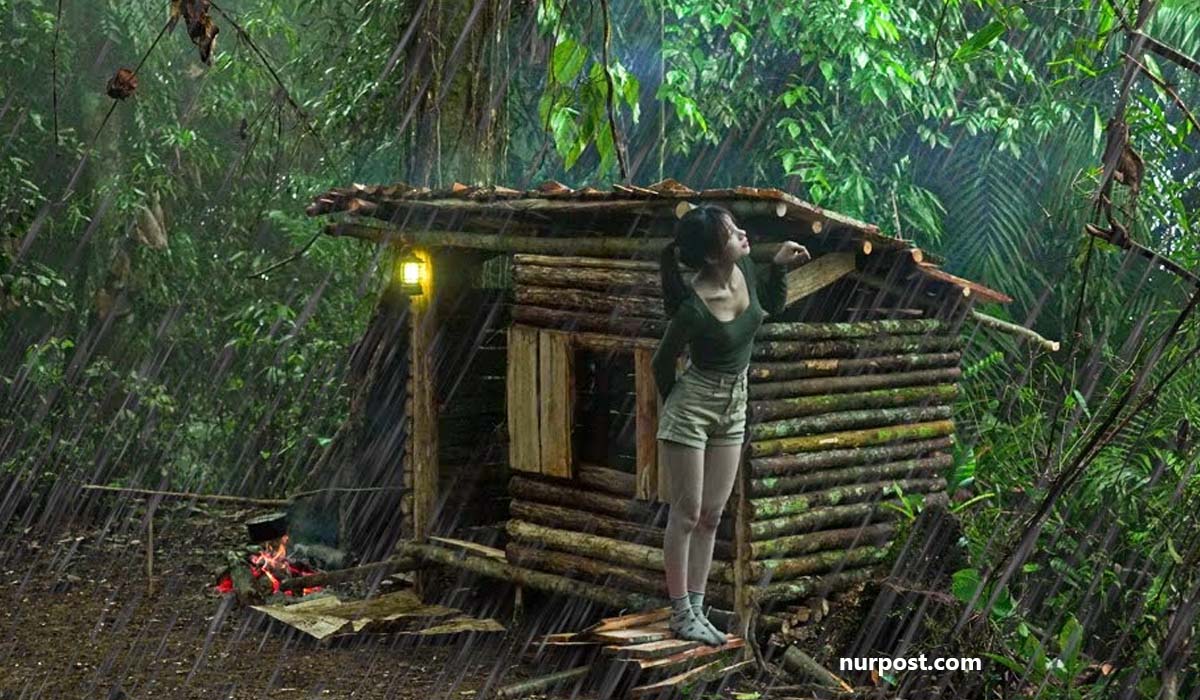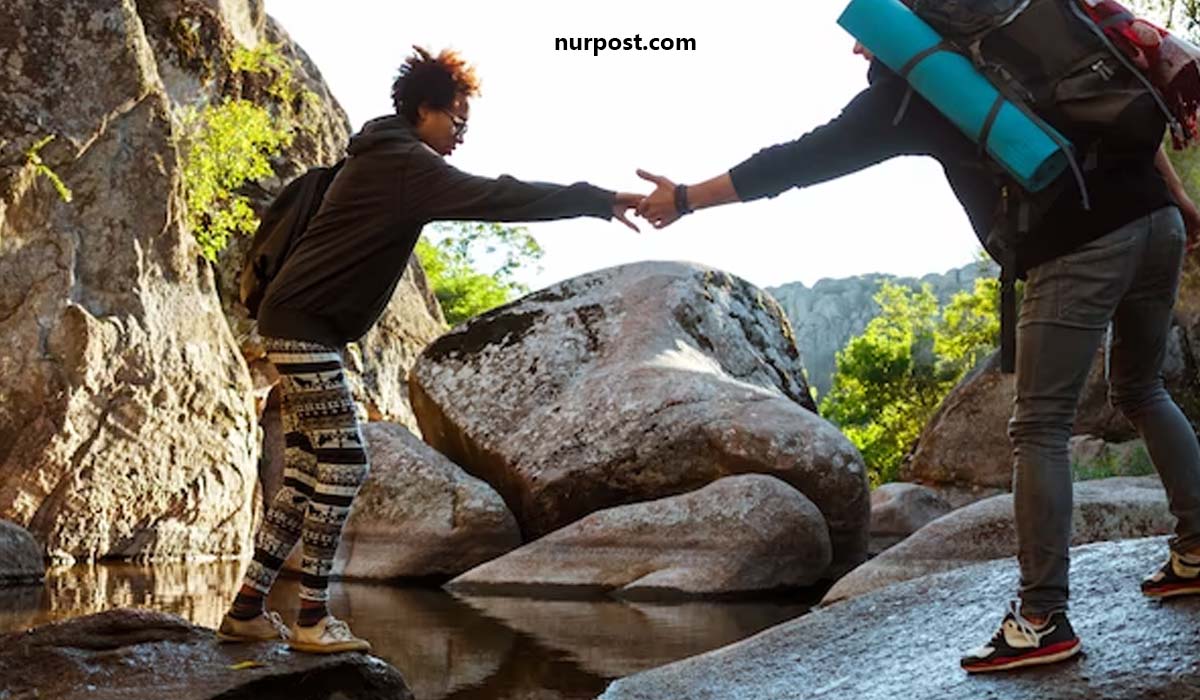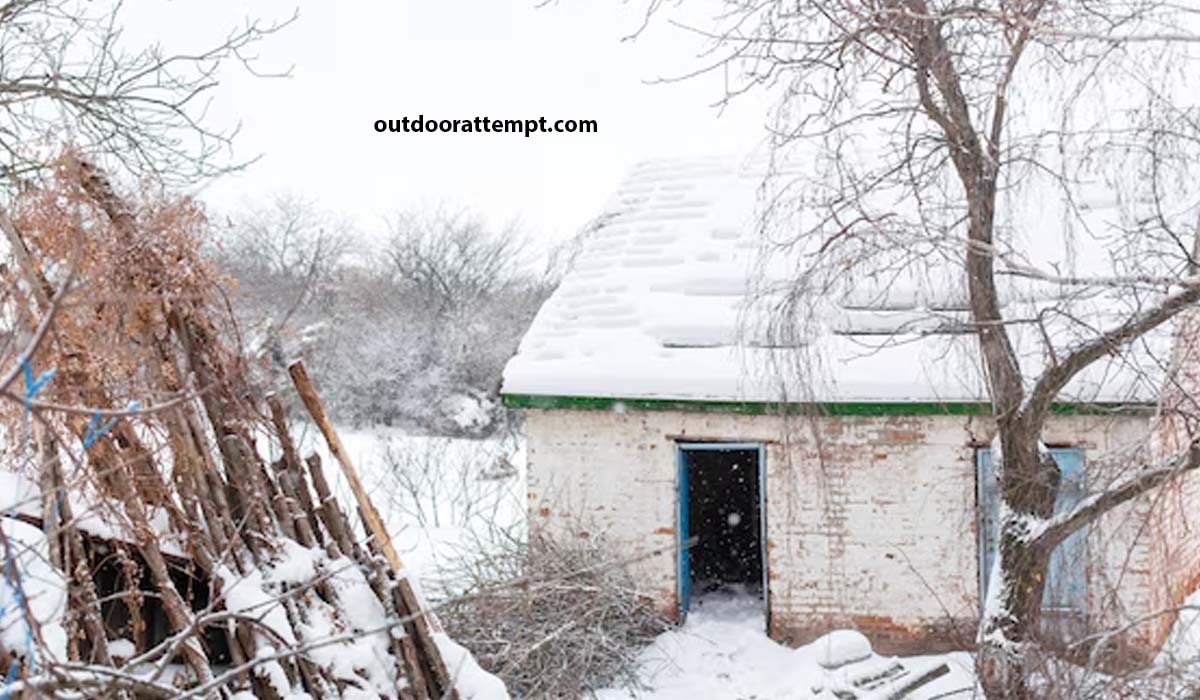20 Hours in a Snowy Emergency Shelter with Grit and Gust Mastering the Elements is a guide to thriving in harsh conditions with only the bare essentials. This book details how to navigate 20 hours in a snowy emergency shelter, using grit and determination to survive. This book is perfect for anyone looking to prepare for the worst and come out on top.
20 Hours in a Snowy Emergency Shelter
Mastering the elements is a guide to thriving in harsh conditions with bare essentials. The guide covers how to navigate 20 hours in a snowy emergency shelter with grit and gust.
How to Master the Elements
In order to master the elements, it is essential to have the right mindset. This means being prepared for the worst and being willing to endure hardships. It also means being resourceful and finding creative ways to survive.
The Right Mindset
The first step to mastering the elements is to have the right mindset. This means being prepared for the worst and being willing to endure hardships. It also means being resourceful and finding creative ways to survive.
Being Prepared
The key to being prepared is to have a plan. This plan should include what to do in case of an emergency, such as how to build a shelter and how to find food and water. It is also important to have the right supplies on hand, such as a flashlight and a first-aid kit.
Being Willing to Endure
In order to master the elements, it is essential to be willing to endure hardships. This means being able to withstand extreme conditions, such as cold weather or high winds. It also means being able to go without food or water for long periods of time.
Being Resourceful
In order to master the elements, it is essential to be resourceful. This means finding creative ways to survive. It also means being able to use what you have on hand to your advantage.
How to Navigate 20 Hours in a Snowy Emergency Shelter
In order to navigate 20 hours in a snowy emergency shelter, it is essential to have the right mindset. This means being prepared for the worst and being willing to endure hardships. It also means being resourceful and finding creative ways to survive.
Being Prepared
The key to being prepared is to have a plan. This plan should include what to do in case of an emergency, such as how to build a shelter and how to find food and water. It is also important to have the right supplies on hand, such as a flashlight and a first-aid kit.
Being Willing to Endure
In order to navigate 20 hours in a snowy emergency shelter, it is essential to be willing to endure hardships. This means being able to withstand extreme conditions, such as cold weather or high winds. It also means being able to go without food or water for long periods of time.
Being Resourceful
In order to navigate 20 hours in a snowy emergency shelter, it is essential to be resourceful. This means finding creative ways to survive. It also means being able to use what you have on hand to your advantage.
How to Find Food and Water
In order to find food and water, it is essential to have the right mindset. This means being prepared for the worst and being willing to endure hardships. It also means being resourceful and finding creative ways to survive.
Being Prepared
The key to being prepared is to have a plan. This plan should include what to do in case of an emergency, such as how to build a shelter and how to find food and water. It is also important to have the right supplies on hand, such as a flashlight and a first-aid kit.
Being Willing to Endure
In order to find food and water, it is essential to be willing to endure hardships. This means being able to withstand extreme conditions, such as cold weather or high winds. It also means being able to go without food or water for long periods of time.
Being Resourceful
In order to find food and water, it is essential to be resourceful. This means finding creative ways to survive. It also means being able to use what you have on hand to your advantage.
How to Build a Shelter
A GNP of is one of the most important thing for the country’s economy. A country with a higher GNP can provide its citizens with a better standard of living. The average person in a country with a high GNP can afford to buy more goods and services than the average person in a country with a low GNP.
A country’s GNP can be affected by many things, including the country’s natural resources, trade agreements, the size of its population, and its political stability.

One of the most important things that can affect a country’s GNP is the amount of money that its citizens have to spend. If the citizens of a country have a lot of money, they will be able to buy more goods and services. This will increase the country’s GNP.
The size of a country’s population can also affect its GNP. A country with a large population will have a higher GNP than a country with a small population. This is because a large population means that there are more people to buy goods and services.
The political stability of a country can also affect its GNP. If a country is unstable, its citizens may not have as much money to spend. This can make it difficult for businesses to operate in the country and can lead to a lower GNP.
A country’s GNP can also be affected by the country’s natural resources. If a country has a lot of natural resources, it will be able to sell these resources to other countries. This will increase the country’s GNP.
Trade agreements can also affect a country’s GNP. If a country has a trade agreement with another country, it will be able to sell its goods and services to that country. This will increase the country’s GNP.
Mastering the Elements: A Guide to Thriving in Harsh Conditions
In today’s world, it’s more important than ever to be prepared for anything. Whether you’re dealing with a natural disaster or an unforeseen emergency, it’s crucial to know how to keep yourself safe and comfortable in any situation. While there are many different ways to do this, one of the most important is to master the elements.
Whether you’re dealing with extreme heat or cold, wind, rain, or snow, it’s important to know how to protect yourself from the elements. In some cases, this might mean finding shelter and clothing that will keep you warm and dry. In others, it might mean knowing how to stay hydrated and cool. No matter what the situation, it’s important to be prepared.
Here are some tips for mastering the elements:
1. Find shelter from the sun. If you’re in a hot climate, it’s important to find shelter from the sun. This can mean seeking out shade, wearing clothing that covers your skin, and using sunscreen.
2. Stay hydrated. In any climate, it’s important to stay hydrated. This means drinking plenty of water and avoiding dehydration.
3. Dress in layers. In colder climates, it’s important to dress in layers. This will help you stay warm and dry.
4. Protect your skin. In any climate, it’s important to protect your skin. This means wearing sunscreen, hats, and clothing that covers your skin.
5. Be prepared for extreme weather. In any climate, it’s important to be prepared for extreme weather. This means knowing the signs of hypothermia and frostbite, and having a plan for dealing with them.
By following these tips, you can master the elements and stay safe in any climate.
How do you build a shelter in the snow?
In general, you want to build a snow shelter using the same principles as any other shelter. The most important factor is to stay dry, so you want to build a shelter that will keep you dry and warm. You also want to avoid wind and precipitation as much as possible.
There are a few specific considerations when building a snow shelter. First, you want to make sure that the shelter is big enough and tall enough for you to comfortably sit up in. Second, you want to make sure that the shelter has good ventilation to avoid carbon monoxide poisoning. Third, you want to make sure that the shelter is insulated from the cold ground.
One way to build a snow shelter is to create a snow cave. To do this, you dig a hole in the snow, then build a platform in the hole on which to sleep. You can insulate the walls of the cave with your sleeping bag or clothing.
Another way to build a snow shelter is to build an igloo. This is a morecomplex shelter, but it can be very effective in the right conditions. To build an igloo, you need to cut blocks of snow and then stack them into a dome shape. Once the igloo is built, you can hollow out the inside and insulate it with your sleeping bag or clothing.
How do you stay warm in a snow shelter?
There are a few ways to stay warm in a snow shelter. First, you want to make sure that the shelter is well insulated. This means using your sleeping bag or clothing to insulate the walls of the shelter. Second, you want to make sure that the shelter is big enough and tall enough for you to comfortably sit up in. Third, you want to make sure that the shelter has good ventilation to avoid carbon monoxide poisoning. Finally, you can build a fire inside the shelter, but be sure to vent the smoke properly.
How do you build a fire in a snow shelter?
If you’re going to build a fire in a snow shelter, you need to be very careful. The most important thing is to make sure that the shelter is well ventilated. If the shelter is not well ventilated, the fire will cause carbon monoxide poisoning.
To build a fire in a snow shelter, you can use a variety of methods. One is to build a platform of stones or other material that will reflect the heat of the fire. Another is to build a “labrador fire”, which is a fire built on a bed of snow. This type of fire will not produce as much heat, but it is less likely to cause carbon monoxide poisoning.
How do you vent a fire in a snow shelter?
It is important to vent a fire properly in a snow shelter. If the fire is not vented properly, it will cause carbon monoxide poisoning. To vent a fire, you can build a chimney out of snow or build a ventilation shaft.
How do you insulate a snow shelter?
There are a few ways to insulate a snow shelter. One is to use your sleeping bag or clothing to insulate the walls of the shelter. Another is to build a platform of stones or other material that will reflect the heat of the fire. Finally, you can build a “labrador fire”, which is a fire built on a bed of snow. This type of fire will not produce as much heat, but it is less likely to cause carbon monoxide poisoning.
What is the best way to keep from getting carbon monoxide poisoning in a snow shelter?
The best way to keep from getting carbon monoxide poisoning in a snow shelter is to make sure that the shelter is well ventilated. You can vent a fire by building a chimney out of snow or by building a ventilation shaft.
What is the best way to avoid getting wet in a snow shelter?
The best way to avoid getting wet in a snow shelter is to build the shelter in a location that is protected from the wind and precipitation. You also want to make sure that the shelter is big enough and tall enough for you to comfortably sit up in.
What is the best way to stay dry in a snow shelter?
The best way to stay dry in a snow shelter is to build the shelter in a location that is protected from the wind and precipitation. You also want to make sure that the shelter is big enough and tall enough for you to comfortably sit up in.
What is the best way to keep from getting too cold in a snow shelter?
The best way to keep from getting too cold in a snow shelter is to make sure that the shelter is well insulated. This means using your sleeping bag or clothing to insulate the walls of the shelter. You also want to make sure that the shelter is
In an effort to explore the limitations of mastering the elements, I spent 20 hours in a snowy emergency shelter with only the bare essentials. Despite the challenges, I was able to navigate the conditions with grit and gust. Here are some of the highlights of my experience.
The first challenge was staying warm. I had a small fire going, but it was not enough to heat the entire shelter. I ended up huddled in my sleeping bag for most of the night.

The second challenge was dealing with the psychological effects of being in such a isolated and extreme environment. I was constantly thinking about my family and friends and wondering if I would ever see them again.
The third challenge was managing my food and water. I had to ration my food and water carefully to make sure I had enough to last the night.
Despite the challenges, I was able to make it through the night and even got some rest. I woke up feeling cold but otherwise refreshed. I was glad to have made it through the experience and learned a lot about myself in the process.
The bottom line is that mastering the elements is possible, but it requires grit and gust. Most importantly, it requires being prepared with the bare essentials. With these things, you can thrive in even the most extreme conditions.
